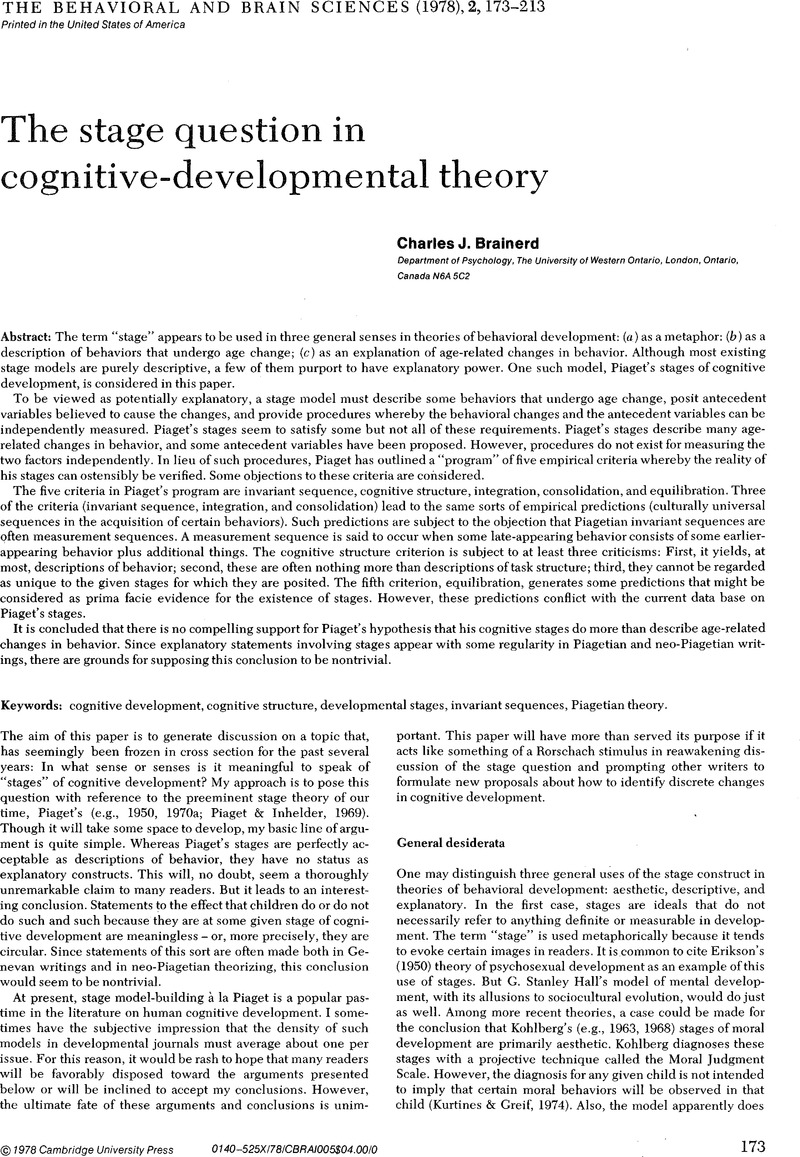Crossref Citations
This article has been cited by the following publications. This list is generated based on data provided by Crossref.
Overton, Willis F.
and
Reese, Hayne W.
1981.
Conceptual Prerequisites for an Understanding of Stability-Change and Continuity-Discontinuity.
International Journal of Behavioral Development,
Vol. 4,
Issue. 1,
p.
99.
Witherington, David C.
and
Heying, Shirley
2015.
The Study of Process and the Nature of Explanation in Developmental Science.
Review of General Psychology,
Vol. 19,
Issue. 3,
p.
345.
Inglis, Matthew
2015.
Review of APOS Theory: A Framework for Research and Curriculum Development in Mathematics Education, Arnon et al. (2014). New York, NY, USA: Springer-Verlag New York. eBook ISBN: 978-1-4614-7966-6, Hardcover ISBN: 978-1-4614-7965-9.
International Journal of Research in Undergraduate Mathematics Education,
Vol. 1,
Issue. 3,
p.
413.
Avakian Orona, Gabe
Eccles, Jacqueline Sue
Zitzmann, Steffen
Fischer, Christian
and
Arum, Richard
2023.
Cognitive development in undergraduate emerging adults: How course-taking breadth supports skill formation.
Contemporary Educational Psychology,
Vol. 74,
Issue. ,
p.
102206.



